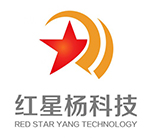Photonics for Energy (PE)
DATE: 7/17/2019
Topical meeting 04
Photonics for Energy
(PE)
Chair
 |
| Wai-Yeung Wong The Hong Kong Polytechnic University, China |
Co-chairs
 |
 |
| Ning Li University of Erlangen-Nuremberg, Germany |
Mingkui Wang Wuhan National Laboratory for Optoelectronics, Huazhong University of Science and Technology, China |
Program Committee Members
Shahzada Ahmad, Basque Center for Materials, Applications & Nanostructures, Spain
Lioz Etgar, The Hebrew University of Jerusalem, Israel
Mohammad khaja Nazeeruddin, Swiss Federal Institute of Technology in Lausanne, Switzerland
Ning Li, University of Erlangen-Nuremberg, Germany
Satoshi Uchida, The University of Tokyo, Japan
Lei Wang, Wuhan National Laboratory for Optoelectronics, Huazhong University of Science and Technology, China
Mingkui Wang, Wuhan National Laboratory for Optoelectronics, Huazhong University of Science and Technology
Invited Speakers
 |
Shahzada Ahmad, Basque Center for Materials, Applications & Nanostructures, Spain Title: Interface engineering through surface passivation for perovskite solar cells development Abstract: The current decade has witnessed the usage of perovskites as a semiconducting pigment for solar cells investigation. High defect tolerance, excellent opto-electrical properties, large carrier diffusion lengths and small exciton binding energy has been reported for solution processed perovskite based solar cell and allowed monumental 25.2% power conversion efficiencies. New chemistry and processing have been adopted to overcome the instability issues, but showed incremental improvements. Unpassivated perovskite surface was found to promote higher level of recombination and has voltage deficit. In this talk, we will discuss strategies to overcome intrinsic instability by means of surface passivation or additive addition in the perovskites layers. |
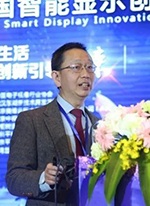 |
Dingguo Chen, Shenzhen China Star Optoelectronics Technology Co., Ltd, China Title: The Trends, Challenges and Opportunities of Display Industry Abstract: With the massive investment of display industry in recent years, and advancement of the display technologies, the displays have entered our daily life extensively and this will become even more important in the future, with the upcoming establishment of 5G communication infrastructure. The major technology trends, challenges and opportunities for TV, mobile phone and flexible AMOLED, that are associated to display industry are discussed in this paper. |
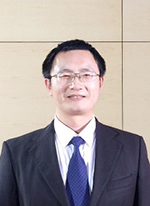 |
Runfeng Chen, Nanjing University of Posts and Telecommunications, China Title: Heteroatom-modified Organic Semiconductors and Organic Afterglow Abstract: Organic afterglow, which is an ultralong room-temperature phosphorescence (OURTP) with long emission lifetime over 100 microseconds, is fundamentally important in organic optoelectronics and practically attractive for novel device applications. In principle, the OURTP emission is weak due to their essentially spin-forbidden nature of the radiative decay process and low intersystem crossing rate owing to the purely organic molecular structures without the aid of heavy atoms. We found the heteroatom modification can significantly promote the spin-flipping in purely organic materials for efficient intersystem crossing to populate the triplet excited states and the heteroatom incorporation is also effective in constructing H-aggregations to stabilize the triplet excited states for OURTP. Thus designed heteroatom-modified organic semiconductors exhibit dynamically activated intersystem crossing with high rate constant up to ~107 s-1 and high OURTP performance with simultaneously elongated lifetime up to ~1.35 s and improved quantum efficiency over 9% under ambient conditions. Meanwhile, with the spectacular resonance-activated OURTP molecules, time-resolved and color-coded quick response code devices with multiple information encryptions have been realized. Our recent works have not only illustrated a feasible design map for the preparation of smart organic semiconductors capable of dynamic structure and property modulations to promote the studies of organic electronics from static to dynamic, but also offered a general way in designing purely organic optoelectronic materials and represents an in-depth understanding of OURTP emission process, which may stimulate significantly the research and application of organic afterglow materials. In this presentation, I will highlight recent advances in manipulating excited states of optoelectronic materials for various applications of OLEDs, bio-imaging, anti-counterfeiting and optical recording, paying special attentions on the mechanisms and photophysical processes. |
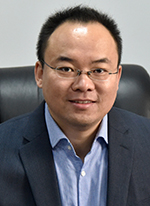 |
Yonghua Chen, Nanjing Tech University, China Title: Ionic Liquid Perovskite Solar Cells Abstract: Solvent is vital to control crystallization and crystal growth of the state-of-the-art solution-processed hybrid organic-inorganic perovskites. However, researchers just focus on the highly toxic and coordinating solvents (e.g., dimethylformamide, dimethylsulfoxide, and g-butyrolactone) and the based modification (e.g., antisolvent), which may hinder the success of perovskite solar cells (PSCs) in practical applications, and a largely serious unexplored challenge remains until now. Here, we report an alternative environment-friendly room temperature molten salt, methyl ammonium acetate (MAAc), as a novel solvent for facile fabrication of PSCs in ambient air. MAAc has excellent chemical properties with high viscosity, negligibly vapor pressure, and nonhazardous. Completely soluble of both methylammonium and lead salts by hydrogen bonds in MAAc were observed. Dense and pinhole-free perovskite films with high reproducibility can be readily prepared by simple one-step method without anti-solvent even under the relative humidity over 80%. Under optimized processing conditions, we achieved an average power conversion efficiency of 18.42% and a maximum efficiency of 20.05% in CH3NH3PbI3-based planar heterojunction structure. Moreover, devices without encapsulation remain above 93% of their original efficiency for more than 1000 hours in ambient air. The findings may open up a new approach for further improving PSCs performance with higher reproducibility and reliability in ambient atmosphere. |
 |
Yanxia Cui, Taiyuan University of Technology, China Title: Enhanced Performance in Perovskite Optoelectronic Devices Abstract: Perovskites as a rising star semiconductor material, has shown great potential in optoelectronic applications including photovoltaics, lasers, photodetectors, and light emitting diodes. Recently, we have demonstrated a series of perovskite optoelectronic devices with enhanced performances. |
 |
Daoxin Dai, Zhejiang University, China Title: Silicon photonic filters Abstract: Photonic filters are playing a very important role for many applications, including optical communications/interconnects as well as optical sensing. This paper gives a review for recently developed silicon photonic filters based on microring resonators and waveguide gratings. |
 |
Lioz Etgar, The Hebrew University of Jerusalem, Israel Title: Perovskite and their applications in photovoltaic cells, nanostructures, semitransparency and low dimensional perovskite Abstract: Photovoltaic cells (PVCs) use semiconductors to convert sunlight into electrical current and are regarded as a key technology for a sustainable energy supply. The 1st and 2nd generations of PV technology were based on bulk semiconductor solids, accompanied by a relatively high manufacturing cost. The 3rd generation of PV cells, developed over the past two decades, differ from previous cells in that they don't necessarily rely only on a traditional single p-n junction configuration. Instead, they are configured as donor- acceptor (D-A) hetero-junctions, with staggered electronic band alignment. These 3rd generation PV cells also carry a lower manufacturing cost. Recent discoveries have revealed a breakthrough in the field using inorganic-organic hybrid layers called perovskites as the light harvester in the solar cell. The inorganic- organic arrangement is self-assembled as alternate layers, being a simple, low cost procedure. These organic-inorganic hybrids promise several benefits not delivered by the separate constituents. This work will discuss new directions related to perovskite and their applications in solar cells. In low dimensional systems, stability of excitons in quantum wells is greatly enhanced due to the confined effect and the coulomb interaction. The exciton binding energy of the typical 2D organic-inorganic perovskites is up to 300 meV and their self-assembled films exhibit bright photoluminescence at room temperature. - In this work we will show the dimensionality in the perovskite structure. The 2D perovskite structure should provide stable perovskite structure compare to the 3D structure. The additional long organic cation, which is added to the perovskite structure (in the 2D structure), is expected to provide hydrophobicity, which will enhance the resistivity of the perovskite to humidity. Moreover we will demonstrate the use of 2D perovskite in high efficiency solar cells. - Moreover, we will show a highly efficient semitransparent perovskite solar cell. The semitransparency was achieved through a mesh assisted evaporation technique when a grid of perovskite is created on the TiO2 surface. The perovskite grid allows to get controlled semitransparent perovskite solar cell. - Organic-inorganic halide perovskite is used mainly in its “bulk” form in the solar cell. Confined perovskite nanostructures could be a promising candidate for efficient optoelectronic devices, taking advantage of the superior bulk properties of organo- metal halide perovskite, as well as the nanoscale properties. In this talk, I will present our recent progress related to the synthesis and characterization of perovskite NPs- i.e. Inorganic and hybrid organic-inorganic NPs. New nanostructures such us: NRs and NWs will be presented and the introduction of other cations such us Rb will be shown. |
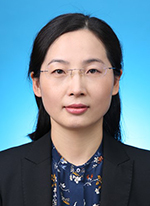 |
Jing Feng, Jilin University, China Title: Flexible and stretchable organic light-emitting devices: toward a wearable display Abstract: Stretchability, efficiency and mechanical robustness of stretchable organic optoelectronic devices are key issues for their applications in wearable electronics. Here we report stretchable organic light-emitting devices (SOLEDs) with optimized thin electrodes and device structure. Highly stretchable OLED has been demonstrated. |
 |
Feng Gao, Linköping University, Sweden Title: High-efficiency perovskite LEDs and their applications Abstract: A major efficiency limit for solution-processed perovskite optoelectronic devices (e.g. light-emitting diodes, LEDs) is trap-mediated non-radiative losses. Defect passivation using organic molecules has been identified as an attractive approach to tackle this issue. However, implementation of this approach has been hindered by a lack of deep understanding of how the molecular structures affect the passivation effectiveness. Firmly based on our new understanding of the passivation mechanisms, we significantly enhance the interaction with defects sites and minimize non-radiative recombination losses. Consequently, we achieve exceptionally high-performance near infrared perovskite LEDs (PeLEDs) with a high external quantum efficiency (EQE) of 21.6%. We find that our devices can also work efficiently in an emitting/detector switchable mode, with tens-megahertz speed for both functions. Benefiting from the small Stokes shift of perovskites, the diode shows high specific detectivity (>2×1012 Jones) at its peak emission (~ 800 nm), allowing optical signal exchange between two identical diodes. We further demonstrate the potential of the dual-functional diode for biomedicine diagnosis applications (as a monolithic heart pulse sensor) and for inter- and intra-chip bidirectional optical communications. |
 |
Anders Hagfeldt, Ecole Polytechnique Fédérale de Lausanne, Switzerland Title: The Versatility of Mesoscopic Solar Cells Abstract: In our work on solid-state dye-sensitized solar cells (ssDSSC) we have recently shown that copper phenanthroline complexes can act as an efficient hole transporting material. We prepared ssDSCs with a novel organic dye WS-72 and [Cu(tmby)2]2+/+ as redox system and achieved record power conversion efficiencies for ssDSCs of 11.7%. Our best DSC efficiency of 13.1% (32% for indoor ligh illumination) for a liquid Cu-complex electrolyte is achieved by the discovery that the PEDOT based counter electrode can be directly contacted with the dye/TiO2 photoelectrode. Thus, there is no space between the two electrodes minimizing diffusion limitations and fill factors up to 0.8 is achieved. In our work on perovskite solar cells (PSC) we have achieved efficiencies above 22% with a mixed composition of iodide/bromide and organic and inorganic cations. With the use of SnO2 compact underlayers as electron acceptor contacts we have constructed planar perovskite solar cells with a hysteresis free efficiency above 23%. Through compositional, engieneering larger preovskite grains grown in a monolithic manner are observed and reproducibility and device stability are improved. With regards to lifetime testing, we have shown a promising stability at 85 oC for 500 h under full solar illumination and maximum power point tracking (95% of the initial performance was retained). Recently, we have also commented on the standardization of PSC aging tests. |
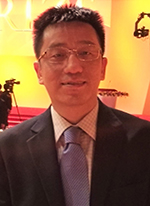 |
Jianhua Hao, The Hong Kong Polytechnic University, China Title: Piezophotonics of the heterostructures and optoelectronic devices from layered III-VI semiconductors Abstract: Piezophotonic effect can be dynamically tuned in real time. Additionally, my group has demonstrated phototransistors based on wafer-scale 2D III-VI thin-films. These studies offer an opportunity to develop optoelectronic and energy devices. |
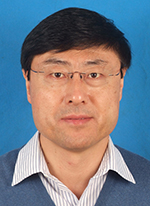 |
Bin Hu, The University of Tennessee, USA Title: Fundamental Studies on Organic Electronics From weak-orbital π-conjugated materials to strong-orbital perovskites Abstract: Organic electronics are established based on both weak-orbital and strong-orbital materials ranging from π-conjugated molecules to hybrid metal halide perovskites. In weak-orbital π-conjugated molecules, the spin functions as the primary parameter to control optoelectronic actions at different length scales in spontaneous and coherent regimes. In strong-orbital perovskites, the orbital momentum plays an important role to control the excited states and charge transport at different length scales towards developing orbital-controllable optoelectronic properties. This presentation will focus on the optoelectronic properties from both weak-orbital π-conjugated materials and strong-orbital perovskites. In weak-orbital π-conjugated materials, the presentation will discuss our recent research of using magnetic field effects to investigate the fundamental mechanisms of operating spin-dependent excited states in TADF and exciplex OLEDs. The discussion will focus on spin-orbital coupling effects towards harvesting triplets into singlets via charge-transfer states. Furthermore, the presentation will introduce the application of magnetic field effects in lasing actions to elucidate the characteristics of light-emitting states for developing coherent light emission. In strong-orbital perovskites, the presentation will introduce our recent research of using circularly polarized spectroscopy towards investigating orbital effects of optoelectronic properties. The discussion will focus on orbit-orbit interaction in organic-inorganic hybrid perovskites ranging from 3D to 2D design. In particular, the orbit-orbit interaction can occur through short-range magnetic channel and long-range polarization channel, leading to instinct light-emitting and photovoltaic properties in spontaneous and stimulated regimes. The presentation will summarize the effects of orbit-orbit interaction on optoelectronic properties in organic-inorganic hybrid perovskites. |
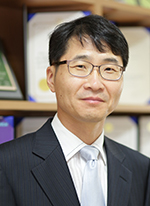 |
Jun Yeob Lee, Sungkyunkwan University, Korea Title: Ternary Exciplexes for High Efficiency Organic Light-Emitting Diodes Abstract: Ternary exciplexes with three components generating two different exciplexes in the mixed films were developed to improve the efficiency of the exciplexes and fluorescent organic light-emitting diodes. |
 |
Ning Li, University of Erlangen-Nuremberg, Germany Title: Stability of Organic Solar Cells: From Fullerene to Non-fullerene Acceptors Abstract: Organic solar cells (OSCs) feature unique properties, such as light weight, flexibility, semi-transparency and colourful device configurations, which are suitable for mobile or de-centralized applications. Recently-emerging non-fullerene acceptors (NFAs) have significantly accelerated the development of highly efficient OSCs, exhibiting great potential to continuously boost their performance towards the efficiency limit of 20%. Although many prominent organic semiconductors are developed to achieve impressively high efficiencies for lab-scale OSCs, the material and device stability are generally not investigated and analysed. The performance and stability of OSCs is typically determined by the delicate, optimized bulk-heterojunction (BHJ) microstructure. In this contribution, I will examine the stability of BHJ microstructures for various OSCs based on fullerene and non-fullerene acceptors. It is found that selected high performance fullerene-based OSCs gain their high excellent performance from meta-stable microstructures, which quickly relax to the thermodynamic equilibrium state under external stress, such as light or thermal stress. The so called burn-in degradation is identified as a spinodal de-mixing due to the inherently low miscibility of donor and acceptor, which can be overcome by adding a small amount of molecular phase stabilizer being compatible with both donor and acceptor. Novel concepts are also proposed to stabilize the microstructure stability of BHJ OSCs. Notably, the NFA-based OSCs suffer from different degradation mechanisms compared to their fullerene-based counterparts. The most stable OSCs exhibit an extrapolated T80 lifetime of over 11000 hours under equivalent one sun illumination, suggesting a very impressive operational lifetime approaching 10 years. By carefully tuning the chemical structure of photoactive materials, the performance of NFA-based OSCs can be significantly improved, while maintaining the excellent device stability. |
 |
Mohammad khaja Nazeeruddin, Ecole Polytechnique Fédérale de Lausanne, Switzerland Title: Stable perovskite solar cells by compositional and interface engineering Abstract: Perovskite solar cells (PSC) are a new paradigm in renewable energy because of their high efficiency reaching over 25% in less than 10 years. The high efficiency of perovskite solar cells is due to their excellent optoelectronic properties, which were optimized by various cations and anions with different ratios. Another advantage of perovskite solar cell is their simple fabrication through solution-processing methods, either in n-i-p or p-i-n configurations. The perovskite absorbing layer consisting of methylammonium lead (II) iodide (MAPbI3) is intrinsically unstable at elevated temperature due to methylammonium cation release. Therefore, compositional engineered cations and anions perovskite [FA0.80.15Cs0.05PbI(3-x)Brx] developed with solvent engineering method to reach over 22% efficiency. However, despite the impressive high efficiency achieved at laboratory scale devices, their long-term stability and performance still need to be improved in order to make PSC a viable technology. In recent years, strategies using mixed composition and 2-Dimensional perovskite materials have been developed towards stable device performance. In this talk, we present layer by layer deposition of 3-Dimensional and 2-Dimensional perovskites and the novel charge transporting materials. |
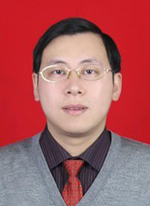 |
Qiang Peng, Sichuan University, China Title: High Performance Wide Bandgap Polymer Photovoltaic Materials and Devices Abstract: Bulk-heterojunction (BHJ) organic solar cells (OSCs), typically consisting of a polymer donor and a fullerene acceptor, have attracted extensive research attentions due to their unique features of low-cost large-area production, light weight, and mechanical flexibility. Recently, non-fullerene small molecular acceptors (SMAs) have emerged as a promising class of alternative acceptors that can overcome the inherent limitations of fullerenes. SMAs exhibit great advantages of low production costs, easily tunable energy levels, broad absorption range, and potentially better morphological stability in the active blend film. The PCEs of non-fullerene OSCs have also increased beyond 16%. However, most of the SMAs are featured as narrow bandgaps. Therefore, high performance wide bandgap copolymer donors are needed for matching the developed SMAs for fabricating efficient OSCs. On the other hand, considering that the low bandgap copolymer donors have been studied for many years and already emerged many excellent candidates, high performance wide bandgap SMAs are also desirable, especially for obtaining efficient ternary blend and tandem OSCs. In this presentation, we will report some advances in development of large bandgap SMAs and copolymer donors for efficient non-fullerene OSCs. Some new fused aza-heterocyclic units were designed for building wide bandgap copolymer donors. Based on these copolymers, PCEs more than 16% have been achieved. The results also include the acceptors based on three dimensional PDIs and AA-D-AA type of linear and 3D conjugated small molecules. Choosing appropriate polymer donors, the fabricated non-fullerene OSCs have exhibited high PCEs more than 13%. The enhancement of the device performance would thank for the good complementary absorption, high charge carrier mobility and optimized morphology. We also demonstrate the relationship between the molecular structures and the optical, electrochemical, crystallinity, carrier transport and photovoltaic properties in our recent research work. |
 |
Yabing Qi, Okinawa Institute of Science and Technology Graduate University, Japan Title: Perovskite Solar Cell Research by Surface Science and Advanced Characterization Abstract: It has just been a decade since metal halide perovskite materials were first utilized in solar cells. Nowadays it has become one of most active research fields and continues to progress rapidly on various fronts. My group at OIST is making efforts to use surface science and advanced material characterization to obtain in-depth understanding about perovskite materials and solar cell devices. Instability, upscalability and lead toxicity are currently the major challenges for perovskite solar cell technology to move forward towards commercialization. In this talk, I will present our research progress on degradation mechanisms of perovskite materials, development of strategies to improve perovskite solar cell device stability, reduction of lead leakage using self-healing polymer-based encapsulation, upscalable fabrication of perovskite solar cells and modules, and surface science understanding of perovskite materials and stability. |
 |
Shi-Jian Su, South China University of Technology, China Title: Engineering the Excited-States of Intermolecular Charge Transfer Emitters Towards High-Performance OLEDs Abstract: Owing to the engineering of the charge transfer excited states between the electron-donor and electron-acceptor molecules, bulk heterojunction and planar heterojunction organic light-emitting diodes (OLEDs) were fabricated with simplified structure and high performance. |
 |
Aye Aye Thant, University of Yangon, Myanmar Title: Synthesis of Graphene Layers by Inductive Coupled Plasma Enhanced Chemical Vapor Deposition (ICP-CVD) for Application in Optoelectronics Abstract: In order to realize the practical application in the fabrication of optoelectronic device, a facile approach of a low-cost, scalable, and controllable manner is essential to synthesize graphene layers. Inductively-Coupled Plasma-Chemical Vapor Deposition (ICP-CVD) being a low-temperature, short processing time and controllable synthesis is a potential method for the formation of high-quality uniform graphene monolayer. The synergetic combination of the distinct carbon solubility of Ni and Cu has been proved to enable the control of thickness of graphene layer by varying the carbon-carrying Ni content in Cu-Ni alloy. One bottleneck in large-area graphene growth is to reduce the number of nucleation sites. On this background, it aimed to prepare graphene layers on the Ni-Cu substrates by ICP-CVD. Prior to the graphene growth, the thin films of Ni and Cu have been deposited on SiO2/Si(100) substrates in a thermal evaporator. The graphene layers have been grown on Ni-Cu films under C2H2-H2-Ar plasma under vacuum annealing condition and then subsequently transferred to target substrates. Graphene layers have been characterized by Atomic Force Microscopy (AFM), Raman scattering technique, Optical Microscopy (OM), UV-Visible Spectroscopy, Scanning electron microscopy (SEM), and Van der Pauw four probe method. The optical microscope images confirmed that the delaminated and fully covered graphene layers were achieved with continuous feature almost without tear and void. The morphology of graphene layers observed by SEM will agree with the results of OM images. AFM topographic analysis provides the thickness of graphene layer to be approximately 0.41 nm to 0.50 nm which is in good agreement with the theoretical value of the thickness of a monolayer graphene. Raman spectra again confirm the growth of single-layer with no detectable defect-related D band. Hall effect measurement of transferred graphene on SiO2/Si substrate confirmed highly p-doped condition with carrier concentration over 1013 in this synthesis. The Cu and Ni films with different thickness have been co-deposited to understand in-depth its effect insight into the growth mechanism. |
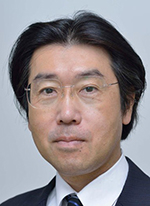 |
Satoshi Uchida, The University of Tokyo, Japan Title: New Discovery of Superlattice Inside the Perovskite Solar Cell Abstract: The micro-structural observation analysis of the perovskite layer with high resolution TEM is the most promising approach to understand the crystal structure. Recently we newly revealed that the tetragonal and cubic phases coexist at room temperature in the conventional MAPbI3 thin film device. Furthermore superlattices composed of these mixture of tetragonal and cubic planes without any compositional change was also found. |
 |
Lei Wang, Wuhan National Laboratory for Optoelectronics, Huazhong University of Science and Technology, China Title: Efficient fluorescent organic light-emitting devices based on novel anthracene derivatives with low efficiency roll-off Abstract: Organic light-emitting devices (OLEDs) have been commercialized in flat panel displays and white light illumination field1-2. However, it’s an enormous challenge to realize high efficiency, thermal stability, sufficiently long lifetime, and saturated deep-blue emission with a Commission Internationale de l'Eclairage (CIE) coordinate of y < 0.10 simultaneously. That means high performance saturated deep-blue OLEDs are hard to obtain. The intrinsic wide-band-gap nature of deep-blue emitter and balancing the various function-layer requirements are all significant challenges in the development of deep-blue OLEDs. Since the first reports on the efficient emissionproperties and excellent stability of 9,10-di-(2-naphthyl)anthracene (ADN)3, there has been intense interest in the development of anthracene derivatives as promising blue emitters and electron transporting materials (ETMs) for EL devices. In this work, we reported several novel anthracene-based compounds, named 4-(10-(4'-(9H-carbazol-9-yl)-2,5-dimethyl-[1,1'-biphenyl]-4-yl)anthracen-9-yl)benzonitrile (2M-ph-pCzAnBzt), 4-(10-(4-(9H-carbazol-9-yl)-2,5-dimethylphenyl)anthracen-9-yl)benzonitrile (2M-pCzAnBzt), 4-(10-(9-phenyl-9H-carbazol-3-yl)anthracen-9-yl)benzonitrile (3CzAnBzt) and 4-(10-(4-(9H-carbazol-9-yl)phenyl)anthracen-9-yl)benzonitrile (pCzAnBzt), which used as emitters to fabricate blue devices. The efficiencies of these devices were among the best of non-doped blue fluorescent OLEDs. The EL performances are summarized in table 1. Meanwhile, new ETMs utilizing anthracene moieties with high electron mobility and good thermal stability were also synthesized. In particular, the device based on 9,10-bis(3-(9H-1,5-diazarcarbazole-9-yl)phenyl)anthracene (m-D15NCzDPA) achieved a maximum external quantum efficiency (EQE) of 8.66%. |
 |
Jianpu Wang, Nanjing Tech University, China Title: Perovskite LEDs: High Efficiency and High Brightness Abstract: Solution-processed light-emitting diodes (LEDs) are attractive for applications in low-cost, large-area lighting sources and displays. Organometal halide perovskites can be processed from solutions at low temperatures to form crystalline direct-bandgap semiconductors with intriguing optoelectronic properties, such as high photoluminescence yield, good charge mobility and excellent color purity. In this talk, I will present our effort to boost the efficiency of perovskite LEDs to a high level which is comparable to organic LEDs. More importantly, organic LEDs are difficult to maintain high efficiency at high current densities due to their excitonic nature and low charge mobilities. Low temperature solution-processed perovskite LEDs demonstrate remarkably high efficiency at high current densities, suggesting unique potential to achieve large size planar LEDs with high efficiency at high brightness. |
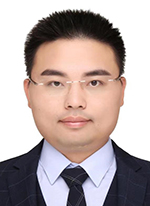 |
Zhanhua Wei, Huaqiao University, China Title: Fabrication of High-Performance Perovskite Optoelectronic Devices Abstract: Herein, by taking advantages of the quasi-core-shell structure of CsPbBr3@MABr, we can boost external quantum efficiency of perovskite-based LEDs to over 20%, showing promising future in lighting and display applications. Metal halide perovskite materials are an emerging class of solution-processed semiconductors with considerable potential for use in optoelectronic devices. For example, light-emitting diodes (LEDs) based on these materials could see application in flat-panel displays and solid-state lighting, owing to their potential to be made at low cost via facile solution processing, and could to provide tunable colors and narrow emission line widths at high photoluminescence quantum yields. However, the highest reported external quantum efficiencies of green- and red-light-emitting perovskite LEDs are still well behind the performance of organic LEDs and inorganic quantum dot LEDs. Here we describe visible-light-emitting perovskite LEDs that surpass the quantum efficiency milestone of 20%. This achievement stems from a new strategy for managing the compositional distribution in the device— an approach that simultaneously provides high luminescence and balanced charge injection. Specifically, we mixed a pre-synthesized CsPbBr3 perovskite with a MABr additive (where MA is CH3NH3), the differing solubilities of which yield sequential crystallization into a CsPbBr3/MABr quasi-core/shell structure. The MABr shell passivates the nonradiative defects that would otherwise be present in CsPbBr3 crystals, boosting the photoluminescence quantum efficiency, while the MABr capping layer enables balanced charge injection. The resulting 20.3% external quantum efficiency represents a substantial step towards the practical application of perovskite LEDs in lighting and display. |
 |
Wai-Yeung Wong, The Hong Kong Polytechnic University, China Title: New Color-Tunable Metallophosphors of Iridium(III) and Platinum(II) Abstract: Owing to their unique electroluminescence (EL) ability of harnessing both singlet and triplet excitons, phosphorescent (triplet) emitters have brought revolutionary progress in the field of organic light-emitting diodes (OLEDs) by furnishing high EL efficiencies. In this talk, the recent developments of a new series of color-tunable iridium(IIII) and platinum(II) metallophosphors will be presented and their use in the full color and white OLED applications will be highlighted. A new electric field induced self assembly of a luminescent anionic platinum(II) complex [Pt(tfmpy)(CN)2]-Bu4N+ (tfmpy = 2-(4-(trifluoromethyl)phenyl)pyridine) 1 showing different nanostructures and distinct emission colors will also be described. |
 |
Hui Xu, Heilongjiang University, China Title: Phosphine Oxide Host Materials for Thermally Activated Delayed Fluorescence Abstract: Thermally activated delayed fluorescence (TADF) emerges rapidly as the new generation of OLED technology. TADF materials are mostly pure-organic compounds with the advantages of low cost and environmental friendliness, however, suffering from low efficiency and severe quenching, especially for blue and white diodes. It should be noticed that due to the charge transfer (CT)-featured excited states of TADF molecules, host-dopant interaction-induced quenching is more serious in comparison to fluorescence and phosphorescence systems, making host materials crucial for efficient TADF diodes. Regarding this, the superiorities of phosphine oxide groups in configuration, photophysical and electrical modulations can provide the solutions of the key issues for TADF technology. In the recent works, we developed a series of phosphine oxide hosts for blue TADF diodes. The host-dopant interactions, including π-π staking, hydrogen bonding and dipole-dipole interaction are finely modulated to simultaneously suppress quenching and preserve effective carrier transporting. As the result, we realize the blue TADF diodes with the turn-on voltage as low as 2.5 V, the maximum EQE beyond 20% and the roll-offs as small as 8% at 1000 nits. |
 |
Jianbin Xu, The Chinese University of Hong Kong, China Title: Study of Crystallization Processes and Stability Improvement of Perovskite Thin films Abstract: The stability of the perovskite thin films is a crucial challenge for the potential commercialization of perovskite photovoltaics. To tackle this issue, our group have systematically interrogated the relation between coordination and crystallization kinetics with the film quality. In combination with surface modification technique, we are able to markedly attain the substantial improvement on stability and efficiency of perovskite solar cells. The comprehensive understanding of the coordination and crystallization mechanism is the key component to improve the film quality. Firstly, we find that the mother solution of perovskite precursor is a colloidal solution. The coordination degree of the lead ion determines the crystallization speed and final morphology of perovskite thin films. The full coordination would effectively reduce the defect density in the perovskite thin films. Starting from this point, we have attempted to replace the traditional PbI2-MAI precursor with the HPbI3-MA one. The fully coordinated HPbI3 framework and subsequent MA passivation render compact perovskite thin films which demonstrated the highest humidity stability then. Afterwards we have further substitute the MA gas for the MA solution to facilitate the large-scale perovskite thin film formation. Secondly, as many research groups have shown that the mixed halide perovskite achieves a higher PCE, we have developed the HPbI2Br by referring to the strategy of HPbI3 synthesis. By taking the different coordination ability of different halide ions into consideration, we are able to control the crystallization speed of mixed perovskite thin film in a relatively largely retardation and produce the high-quality perovskite thin films leading to a higher PCE as well as the better stability. Finally, we exploit various characterization technique, e.g., in-situ XPS, in-situ XRD, ex-situ PL, etc., to uncover the synergetic processes of organic cations and halide ions during thermal aging of the mixed perovskite thin films. This investigation shows that the coordination ability of each component in perovskite thin film determines the degradation barrier height and the coordination engineering is critical to the advances of the perovskite solar cells. In addition, the surface modification is another useful strategy for coordination tuning and defects passivation. The KPFM measurement shows that Ostwald ripening process of pristine perovskite crystals in MAI/IPA solution can largely reduce the structural defects and improve their optoelectronic properties. It is found that the mixed perovskite thin films encounter severe phase competition during crystallization due to the appreciable ion size difference. We have developed a two-step dual-ion exchange method. Firstly we deposit FAPbI3 thin film with high crystallinity and then introduce MA+ and Br? ions through tert-butanol. The detailed exchange dynamics study illustrates that the MA+ and Br? ions can firstly heal the defects at grain boundaries and then inserting into grain interior and release the lattice strain of raw FAPbI3, leading to the high-quality mixed perovskite thin films. Finally, the surface modification can even assist in establishing perovskite-perovskite homojunction or heterojunction and fulfill the more concise energy-band engineering facilitating more efficient carrier separation and extraction. We have modified MAPbI3 with long chain molecule BAI so as to form the 3D-2D perovskite-perovskite heterojunction. The surface hydrophobic 2D perovskite not only protects the inner 3D perovskite from high humidity or high temperature, but also efficiently extracts the photo-generated holes. Thus, the 3D-2D perovskite-perovskite heterojunction solar cells are produced without the traditionally high-cost and unstable HTM. Recently, the concept of perovskite homojunction or heterojunction and energy-band engineering has been widely recognized by the research community. |
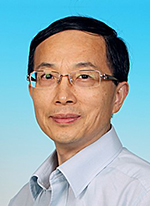 |
Shihe Yang, The Hong Kong University of Science and Technology, China Title: Tailoring Sustainable Optoelectronic Materials for Efficient Solar Energy Conversion Abstract: In this contribution, I will present our recent work on the development of nanostructures to accommodate the diametric requirements of light absorption and charge collection. |
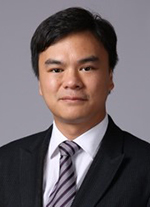 |
Hin-Lap Yip, South China University of Technology, China Title: High-Throughput Optical Modeling Guided Design of Polymer Solar Cells Abstract: High-throughput modeling is introduced as a powerful optical management tool to design state-of-the-art tandem and semitransparent polymer solar cells. The applications of semitransparent polymer solar cells as power generating windows for smart greenhouse and low energy buildings will also be highlighted. |
 |
Qiang Zhao, Nanjing University of Posts and Telecommunications, China Title: Metal-Containing Organic Semiconductors with Tunable Excited States for Optoelectronic Applications Abstract: Phosphorescent transition-metal complexes (PTMCs), such as those of Ir(III) and Pt(II), have been attracting significant attention because of their excellent luminescent properties and promising optoelectronic applications. Different from conventional fluorescent materials, which are singlet state emitters, d6, d8 and d10 PTMCs are triplet emitters, which come from efficient singlet–triplet mixing state induced by strong spin–orbit coupling. In recent years, PTMCs have been widely applied in organic light-emitting diodes, light-emitting electrochemical cell, memory, biosensing and bioimaging, and so on, because of their rich excited-state properties, including high luminescence quantum yields, long emission lifetimes, large Stokes shifts, high photostability and various luminescence colors. I have continuously focused on the research of PTMCs and their optoelectronic applications. In this talk, I will introduce our recent research works about the design, synthesis and optoelectronic applications of PTMCs. Three topics will be covered. 1) Tunable excited-state properties of PTMCs through covalent modification and non-covalent interactions; 2) Application of PTMCs in organic optoelectronic devices; 3) Application of PTMCs in time-resolved luminescence biosensing and bioimaging utilizing their long emission lifetimes. |















